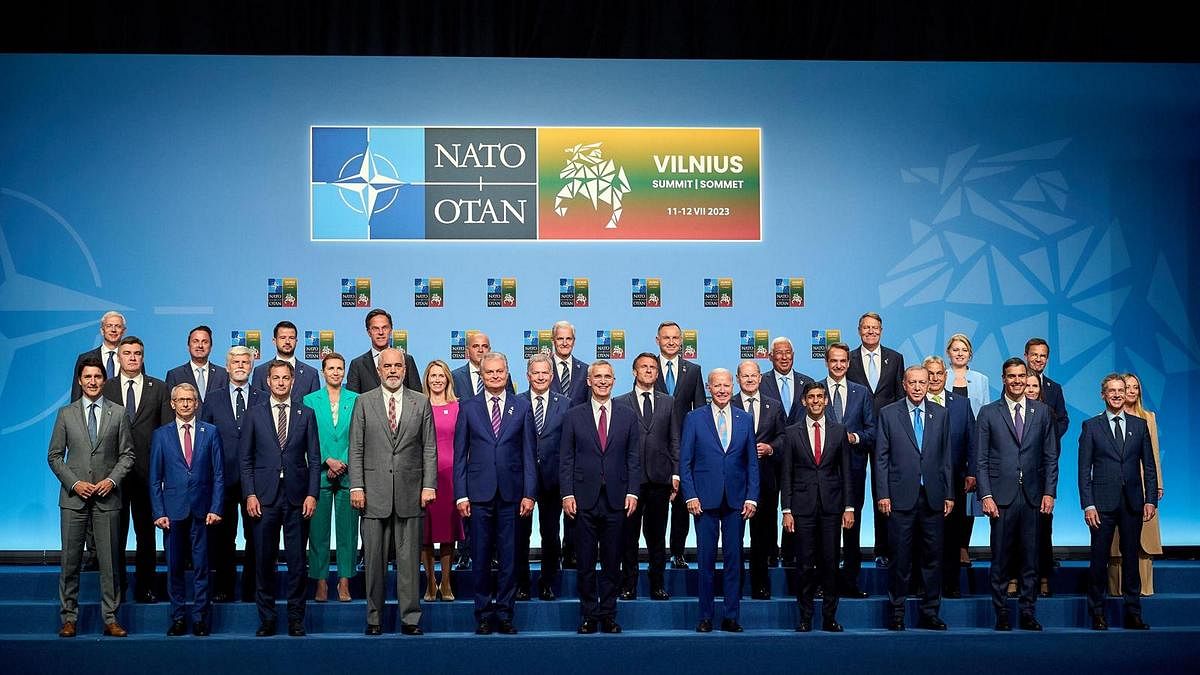Historical Context and Evolution of NATO

Nato summit – The North Atlantic Treaty Organization (NATO) emerged during the Cold War as a response to the perceived threat posed by the Soviet Union and its satellite states. The alliance was formally established in 1949 with the signing of the North Atlantic Treaty, which committed its members to collective security, meaning that an attack on one member would be considered an attack on all.
The NATO summit, held in Madrid, Spain, brought together leaders from across the alliance to discuss pressing issues facing the world today. President Biden, a key figure in the summit, emphasized the importance of NATO’s unity and resolve in addressing these challenges.
As the alliance faces threats from Russia and China, the Biden administration has been working closely with NATO members to strengthen the alliance and ensure its continued relevance in the 21st century. The summit provided an opportunity for leaders to discuss ways to enhance NATO’s capabilities and adapt to evolving threats, ensuring that the alliance remains a vital force for peace and stability in the world.
Origins and Formation
NATO’s origins can be traced back to the aftermath of World War II, when Western powers sought to establish a collective security arrangement to prevent future aggression. The United States, in particular, was concerned about the growing influence of the Soviet Union in Eastern Europe and the threat of communist expansionism.
Key Principles and Objectives
The core principle of NATO is collective defense, which is enshrined in Article 5 of the North Atlantic Treaty. This article states that an attack against one member state is considered an attack against all members, and that each member is obligated to come to the aid of any other member that is attacked.
The NATO summit convened this week in Madrid, bringing together leaders from across the alliance to discuss the war in Ukraine and other pressing security challenges. Among those in attendance was George Stephanopoulos , who provided insightful commentary on the summit’s proceedings.
Stephanopoulos’s analysis underscored the significance of the summit, as NATO members reaffirmed their commitment to collective defense and charted a path forward in the face of ongoing threats.
Expansion and Membership Growth, Nato summit
Since its founding, NATO has expanded significantly, with new members joining in waves. The first major expansion occurred in 1952, when Greece and Turkey joined the alliance. In 1955, West Germany became a member, followed by Spain in 1982. After the collapse of the Soviet Union, NATO expanded eastward, with Poland, Hungary, and the Czech Republic joining in 1999. The most recent expansion occurred in 2004, with the addition of Bulgaria, Estonia, Latvia, Lithuania, Romania, Slovakia, and Slovenia.
Current Issues and Challenges Facing NATO
The ongoing conflict in Ukraine has had a profound impact on NATO’s strategic priorities, exposing the vulnerability of its eastern flank and the need for a more robust defense posture. Moreover, emerging threats such as cyberwarfare and terrorism demand NATO’s attention, necessitating a reevaluation of its capabilities and strategies.
NATO’s Response to the Ukraine Conflict
The Russian invasion of Ukraine has highlighted the need for NATO to strengthen its deterrence and defense capabilities. The Alliance has responded by increasing its military presence in Eastern Europe, providing weapons and training to Ukraine, and imposing sanctions on Russia. These measures have helped to deter further Russian aggression and support Ukraine’s defense efforts.
Addressing Emerging Threats
Cyberwarfare and terrorism pose significant threats to NATO member states. Cyberattacks can disrupt critical infrastructure, steal sensitive information, and spread disinformation. Terrorism remains a major security concern, with terrorist groups operating in many parts of the world. NATO is working to enhance its cyber defenses and strengthen its cooperation with other organizations to combat terrorism.
Fostering Cooperation with Non-Member States
NATO recognizes the importance of fostering cooperation with non-member states to address common security challenges. The Alliance has established partnerships with countries around the world, including Ukraine, Georgia, and Australia. These partnerships provide a platform for dialogue, cooperation, and joint exercises, helping to build trust and enhance global security.
Future Prospects and Implications of NATO: Nato Summit

NATO’s future relevance and effectiveness hinge on its ability to adapt to emerging security challenges and maintain its cohesion amidst geopolitical shifts. Its enlargement has significant implications for global security dynamics, potentially expanding its sphere of influence and shaping the balance of power. Moreover, NATO plays a crucial role in promoting stability and peace in the Euro-Atlantic region and beyond, fostering cooperation and deterring potential threats.
NATO’s Enlargement and Global Security
NATO’s enlargement has been a subject of ongoing debate, with differing perspectives on its impact on global security. Some argue that it strengthens the alliance, deterring potential aggressors and promoting stability in regions bordering Russia. Others express concerns about the potential for increased tensions with Russia and the risk of overextending NATO’s resources.
NATO’s Role in Promoting Stability and Peace
NATO has played a significant role in maintaining stability and peace in the Euro-Atlantic region and beyond. Its collective defense commitment and military capabilities have deterred potential conflicts and provided a framework for cooperation among member states. NATO has also been involved in peacekeeping operations and capacity-building efforts in various regions, contributing to international security.